It began when I started collecting old Nintendo Game & Watch. I got my hands on one of these old LCD handhelds from the early 80s and I feel in love. Of course in part it is nostalgia, but there’s also something so charming and compelling about these tiny games based on modified pocket calculators. They are gaming haikus: with extremely limited controls and incredibly tight design constraints, these games still manage to be fun, varied and challenging, forty years after their launch.
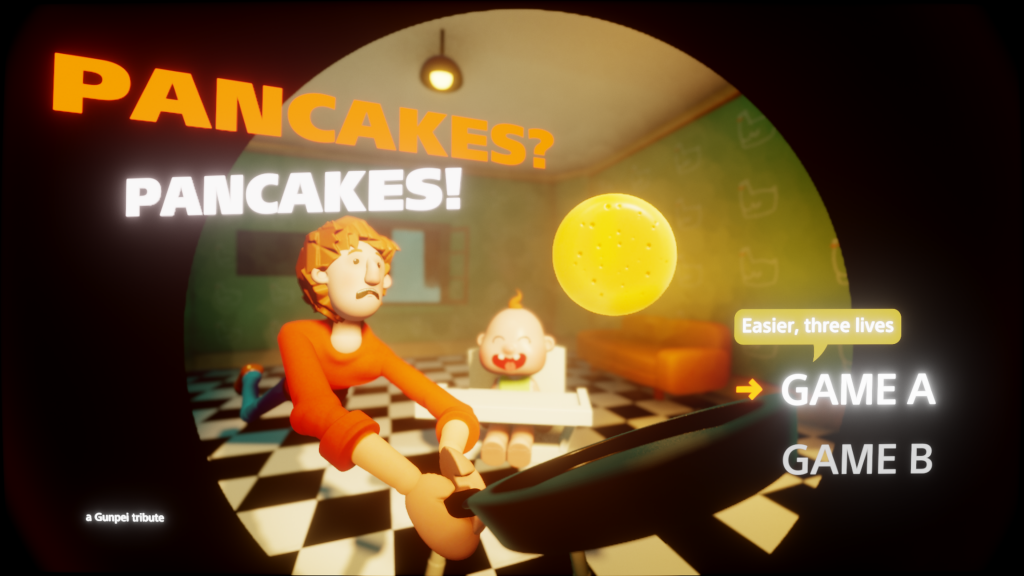
So I got into the rabbit hole of collecting Game & Watch. But, as it always happens for my personal projects, I started having a persistent thought that wouldn’t go away. This time it was “could I make something like that? Something so simple but polished and refined? Can I make a Game & Watch-like game in 2020?”. One year and a few hundreds of hours later, the answer is… maybe? You be the judge. Pancakes? Pancakes! is out now on Dreams (you can play it here)
As the original G&W games, Pancakes works with very few elements and with no fluid animations. The main character is a father who is trying to make as many pancakes for his infant child. The child will eat an infinite amount of pancakes – based on a true story – so the game always ends with a game over. Although the theme and the juggling seems similar to Chef, the real inspiration was from Tropical Fish, one of my favorite Game & Watch. My small contribution to that core juggling gameplay is the cooking feature: every time an egg bounce on the pan, it gets one step closer to be a pancake. If the player is too fast or too slow in delivering the pancake to the kid, the pancake will be under- or overcooked, giving a lower score than a perfectly cooked pancake.
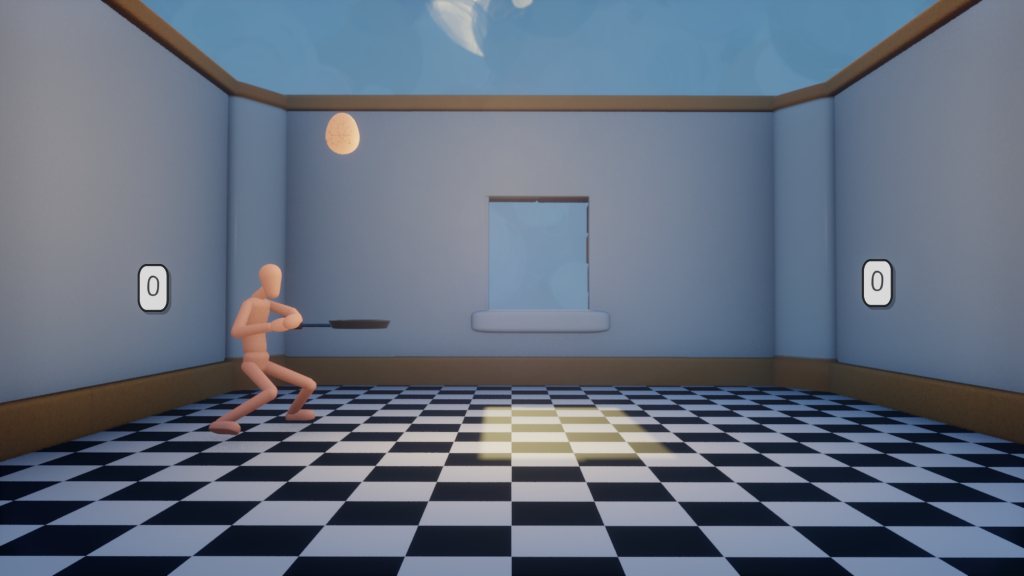
The eggs move in exact steps on every tick of a timer, and the player can only move in three positions. This very simple setup turned out to be much more complex to realize in a good way than I expected. It may not be obvious at a first glance, but Game & Watch games are much more subtle than it appears.
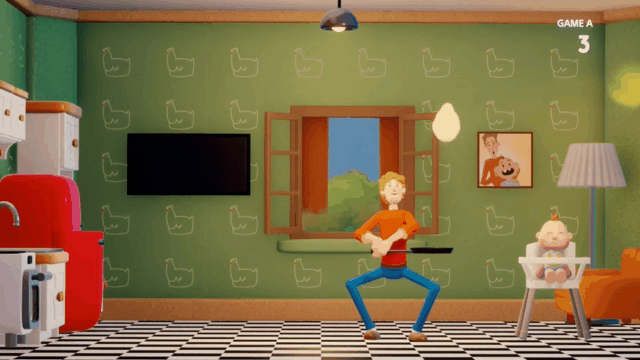
First of all, the mechanical core of the gameplay is generally skewed in favor of the player. For example, in G&W games with a juggling gameplay, such as Chef or Tropical Fish, being in the right position at any point during the last time tick before game over will result in the object being juggled. Game over only happens if the player is not where they should be at the end of the tick. This means that a player can hit multiple objects during the same time tick and game over only happens when there’s a genuine mistake instead of a lack of perfect timing. Implementing something similar in Pancakes took me some time. In part because I found using Dreams’ scripting system a bit clunky in these kinds of logic loops compared to a programming language, but also because it is genuinely hard to marry the clockwork style of this gameplay to the necessity of preventing players’ frustration.
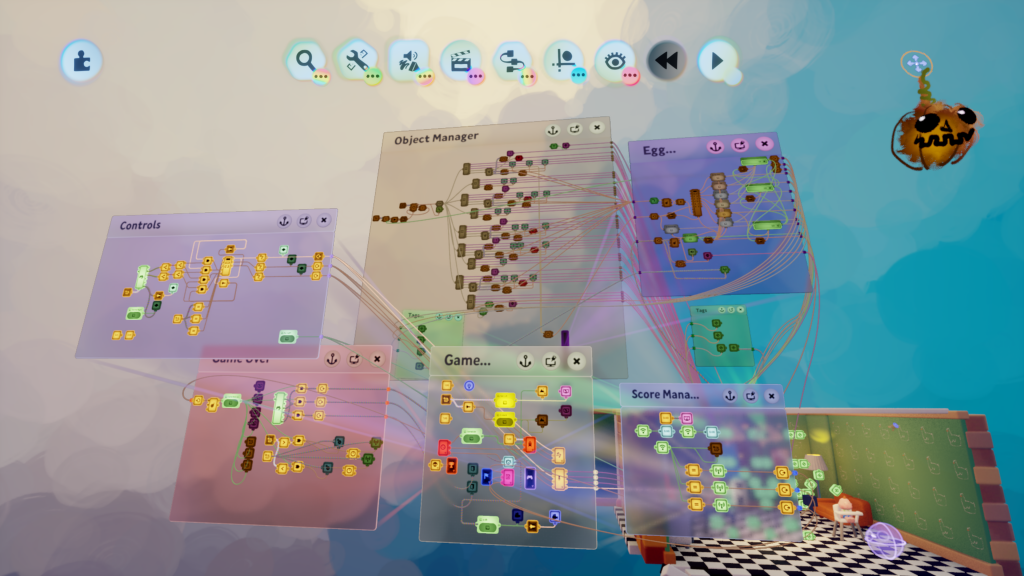
Then there’s difficulty: the best G&W games have near-perfect difficulty curves. Rather than constantly increasing the speed and difficulty of the game, G&W games usually start slowly and they increase the tempo of the gameplay until a certain point; then the difficulty sharply drops before starting to increase again. These peaks and valley of difficulty give players some time to breathe while guaranteeing challenging gameplay. It’s a surprisingly refined and modern approach to difficulty progression, and one that I tried to apply to Pancakes. Of course, I also had to create two different game modes called Game A and Game B, with the former being easy and the latter harder.
Finally, the audiovisual part. One of the most important things for me was to try and make the set design charming, clear and attractive. I iterated for a long time on a color palette I liked, on the placing of the elements and, even more important, on the poses of the main character, trying to make them as expressive and funny as possible. I also wanted some animation for the kid when each pancake is delivered, and on game over.
When it comes to audio, I didn’t want a traditional soundtrack. I like the clicking and beeping of Game & Watch but I felt that exactly replicating that style of sound would be a bit sterile. So, I decided to use single notes from different instruments for each movement and action: drum sounds for the eggs/pancakes, acoustic bass sounds for the player movement, and piano chords for the feedback from the kid. I am quite happy how it ended up: a game of Pancakes sounds like a syncopated jazz jam session and it has a sort of nice wonky rhythm to it.
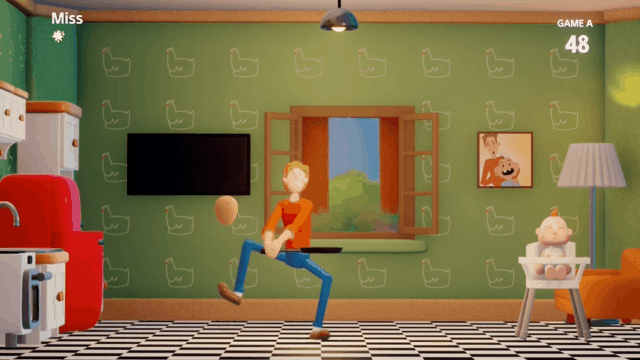
I had a blast making Pancakes? Pancakes! . It turned out to be a much longer project than I expected – like every project, really – but I am extremely happy about how it turned out. I tried to cram as many details I could into this tiny game and I hope someone will try to chase a high score, even for just five minutes. As Game & Watch prove: even one minute of fun can be enough.